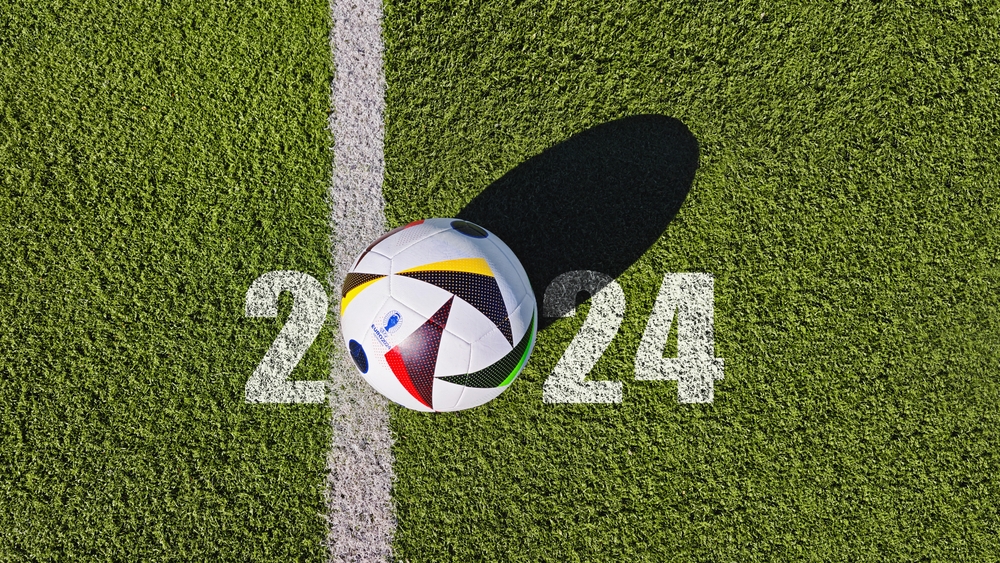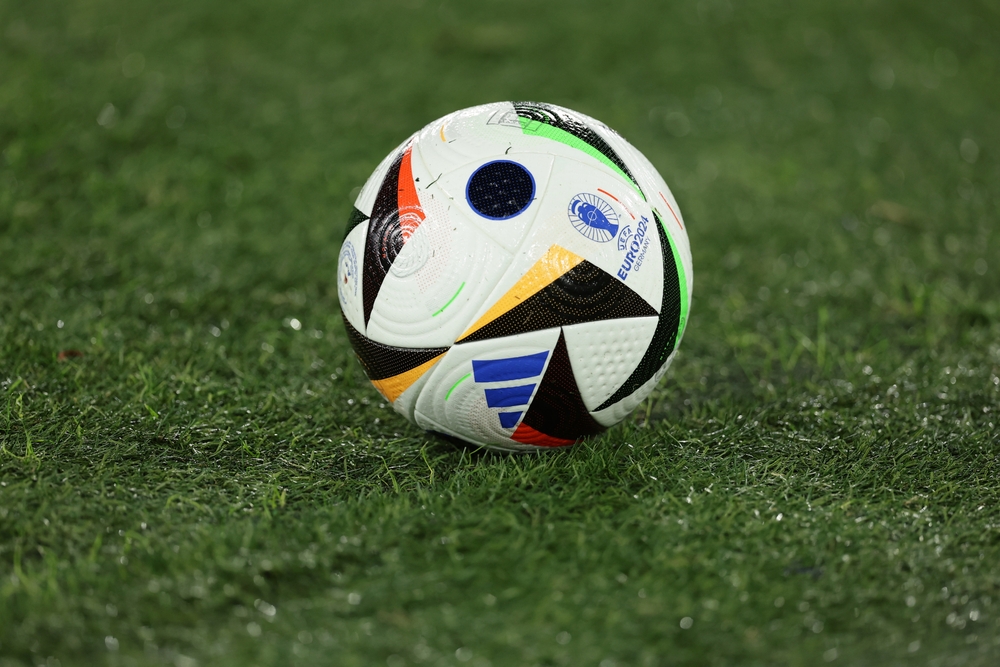The Official Euro 2024 Ball: Design, Features and History
 For some football fans, the release of the official Euro 2024 match ball is almost as important as the tournament itself. Many, including the players, are interested in the ball’s design and features. On this page, we will discuss the ball that will be used in Germany this summer. We will also look at how the official ball has developed over the years.
For some football fans, the release of the official Euro 2024 match ball is almost as important as the tournament itself. Many, including the players, are interested in the ball’s design and features. On this page, we will discuss the ball that will be used in Germany this summer. We will also look at how the official ball has developed over the years.
Euro 2024 Official Ball
The “FUSSBALLLIEBE” is the name of the official Euro 2024 ball. Translating to “Love of Football” in English, the design was inspired by the energy of the tournament. The ball will feature “Connected Ball” technology for the first time, a concept created by Adidas. The ball was released by Adidas and UEFA on November 15, 2023. The unveiling took place at the Olympiastadion in Berlin, the host of the Euro 2024 final.
Zvonimir Boban, UEFA technical director and chief of football:
“The UEFA European Football Championship stands as the pinnacle of national team competition in Europe and we are committed to ensuring that every aspect, from the venues to the equipment, upholds the highest standards of quality and performance. We are, as always, confident that Adidas’ FUSSBALLLIEBE will mark another stride in our shared dedication to excellence.”
Connected Ball Technology
Connected Ball Technology gives insight into the movement of the ball. It will also assist referees in their decision-making at Euro 2024. The ball’s outer shell features CTR-CORE, designed for greater consistency and accuracy. It also helps with air retention and precision play.
FUSSBALLLIEBE Design
 The Euro 2024 ball features black wing shapes, colourful edges, curves and dots. The red, blue, green and orange colour scheme celebrates the simplicity of football and the vibrance of the competing nations.
The Euro 2024 ball features black wing shapes, colourful edges, curves and dots. The red, blue, green and orange colour scheme celebrates the simplicity of football and the vibrance of the competing nations.
The ball also features illustrations of each of the stadiums used at Euro 2024, along with the name of the host cities. More sustainable materials than ever before have been used by Adidas to make official match balls. Corn fibres, sugar cane, wood pulp, and rubber are featured
in each layer.
Sam Handy, VP Product and Design, adidas Football:
“When designing this Official Match Ball, we were inspired by the energy and diversity of the tournament and the love that Europe has for football. With that in mind, we hope FUSSBALLLIEBE will bring joy wherever it’s kicked.”
How to Purchase the Euro 2024 Ball
You can purchase the official Euro 2024 ball through selected retailers. 1% of net sales will go to the Common Goal charity. The official ball costs £130 from Adidas. However, there are replica versions that are cheaper. These range from £13 to £50.
The History of Euro Match Balls
The first European Championship was held in 1960. However, there are no records of the balls used until the 1968 tournament. Let’s take a look at the official match ball every four years leading up to Euro 2024.
1968: Telstar Elast
Named after the Telstar Communications satellite, this Adidas creation featured traditional dotted solar panels.
1972: Telestar Durlast
A remake of the ball used four years prior, the Telestar Durlast came with a new coating. Updraded technology also made the ball more water-resistant.
1976: Telstar Durlast
The same ball was also used in Czechslovakia in 1976. Additional lamination gave it even greater resistance against water intake.
1980: Tango River Plate
After being used at the 1978 FIFA World Cup, the Tango River Plate was deployed for the first Euro in Italy. The ball originally referenced the culture of Argentina.
1984: Tango Mundial
The Tango Mundial was the first non-leather ball used at the European Championship. An enhanced layering system made it more cushioned. It was also the first ball to feature a bespoke Euro design for the competition.
1988: Tango Europa
The Tango Europa came with better coating and seam sealing to protect the ball against water.
1992: Etrusco Unico
Also used at the 1990 World Cup in Italy and the 1992 Summer Olympics, the Etrusco Unico was based on Italian ancient history. Each of the 20 tango triads featured three Etruscan lion heads.
1996: Questra Europa
This was the first official Euro ball to feature colour. A variant of the 1994 World Cup ball, the design featured lions and red roses, symbolic of host nation, England.
2000: Terrestra Silverstream
The name and design of the Terrestra Silverstream come from the famous canels of Belgium and the Netherlands. The ball also featured a revolutionary new outer layer. This made it softer, easier to control and more accurate.
2004: Roteiro
Roteiro translates to “road map” in Portuguese. This was a nod to the efforts of explorers in the 15th and 16th centuries. Each ball used at Euro 2004 was inscribed with the name of the teams, the date, stadium and coordinates of the centre circle.
2008: Europass
Featuring 14 panels instead of the more common 32, the Europass ball was designed to give players extra grip. A unique silver version was used in the Euro 2008 final.
2012: Tango 12
The Tango series returned in 2012. The ball’s design was inspired by the flags of Poland and Ukraine, the Euro 2012 co-hosts. Graphics celebrating paper cutting was also visible.
2016: Beau Jeu
Translating to “beautiful game”, this ball was blue, white and red in honour of hosts France. The Fracas, a variant of Beau Jeu was used in the knockout stage at Euro 2016.
2020: Uniforia
Uniforia was named after unity and euphoria because Euro 2020 was held in 11 European countries. The bold design featured black brushstrokes and flashes of bright lights.

